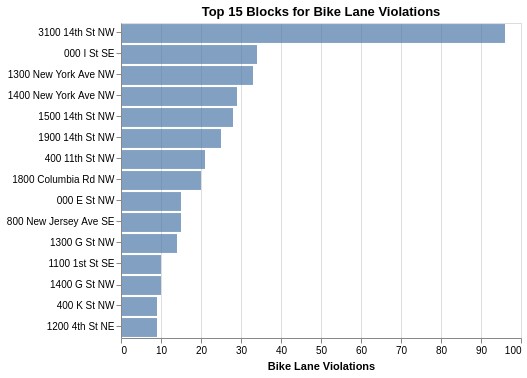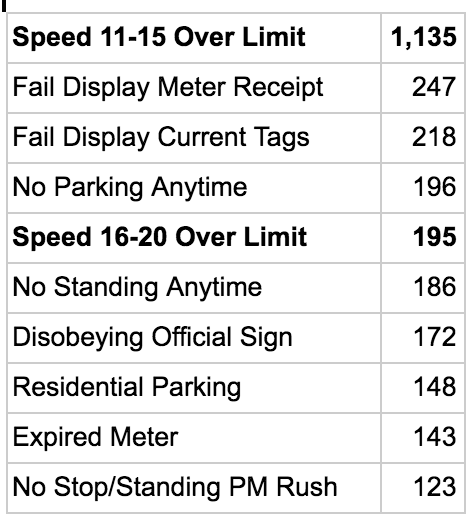Residents tracked nearly 700 vehicles blocking bike lanes in one day

Bike lane violation by Timothy Vollmer licensed under Creative Commons.
This past Wednesday, more than 60 people spread out across DC for a coordinated effort to capture in real-time just how many cars and trucks block bike lanes during busy times. Volunteers submitted nearly 700 bike violations using the How’s My Driving App.
The app, launched in January, allows people to capture driving behavior like standing in a bike lane or blocking a crosswalk. The app draws data from the DC DMV website and shows the user a summary of how many tickets a vehicle has. It also generates a report they can tweet at DC 311.
Volunteers reported drivers in bike lanes
What gets measured gets managed. So on May 15, volunteers fanned out to record vehicles blocking bike lanes and document just how pervasive bike lane violations are during the morning rush, lunch hour, and evening rush for what we called the first ever Data-Protected Bike Lane Project (#DataPBL).
Using the How’s My Driving app, the group submitted a total of 698 bike lane violations. For reference, that’s about 25% of the 2,900 citations that the city issued for blocked bike lanes in all of 2018.
Throughout the day, the dashboard below updated in real time so everyone could track the project’s collective progress. The map below shows all violations, color-coded by citation status (no outstanding citations, outstanding citations, eligible for tow). If you hover over a point on the map, it will display the address, license plate state, and outstanding citation dollar amount. Use the dropdown to switch between time periods, to see how violation recording patterns changed throughout the day.
Diving into the data
Vehicles with DC and Maryland tags were found to be blocking bike lanes with the same frequency, while vehicles with Virginia plates were found to have half as many violations as their counterparts. However, both Virginia and Maryland vehicles averaged over $220 and $260, respectively, in outstanding citations per vehicle. DC vehicles averaged less than half that at $117 in citations per vehicle. It’s important to note that there is a lack of reciprocity between DC, Maryland and Virginia regarding DC parking and speed camera citations issued in DC.
DC vehicles have a relatively high rate of outstanding citations, but a relatively low number are eligible for tow. For a vehicle to be eligible for tow, it must have at least two outstanding citations 60 days old or older. DC vehicles are more likely to be present in DC for a greater percent of the day and therefore more likely to receive citations. However, DC vehicles have low tow eligible rates because outstanding citations must be paid off when renewing a vehicle registration. Meanwhile, if a Maryland or Virginia driver has unpaid citations in DC, those tickets won’t show up in their state’s DMV database when they go to renew the tags.
As you saw earlier in the interactive map, there are certainly concentrated areas for bike lane violations. This chart quantifies those clusters in a different way. We can see that 14th and Irving by DC USA is the number one hot spot. Other areas of high activity included Metro Center, Navy Yard, and 14th St between Logan Circle and U Street NW.
Top 10 citation types
Above are the top 10 citation types associated with the vehicles captured during the Data Protected Bike Lane Project, with speed camera citations being the overwhelming majority of citations. For context, DC issues approximately the same number of speed camera and parking citations annually, with expired meters and tags accounting for approximately 50% of parking citations.Therefore, in this vehicle population, speed camera citations are over-represented and parking citations are underrepresented.
What’s next?
We hope to share our findings with DDOT, DPW and other interested government agencies. We’re also going to do this again with improved efficacy based on what we’ve learned here. An action around the lack of Sunday parking enforcement by DPW is also in the works for early June. To receive updates on these actions and the HMD app in general, sign up to beta test or follow the app on Twitter.




